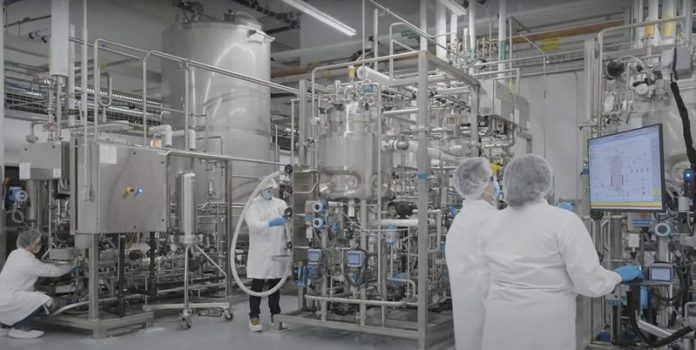Biologics manufacturing has witnessed remarkable advancements in recent years, leading to groundbreaking treatments for various diseases. A crucial stage in the production of biologics is aseptic fill-finish, where sterile drug products are transferred into containers under controlled conditions. In this article, we will explore the latest trends and technologies in aseptic fill-finish, shedding light on the advancements that are revolutionizing biologics manufacturing.
1.The Importance of Aseptic Fill-Finish
Aseptic fill-finish is a critical step in biologics manufacturing as it ensures the preservation of product integrity and minimizes the risk of contamination, ultimately guaranteeing the safety and efficacy of the final drug product. The fill-finish process requires meticulous attention to sterility and quality control to meet regulatory requirements and provide patients with safe and effective biologics.
2. Automation and Robotics
Advancements in automation and robotics have transformed the field of aseptic fill-finish, offering increased efficiency and accuracy. Automated systems, equipped with robotics, can perform tasks such as vial washing, filling, stoppering, and capping with precision and speed. These technologies reduce the risk of human error, improve sterility assurance, and enhance the overall productivity of the fill-finish process.
3.Single-Use Systems
Single-use systems have gained prominence in aseptic fill-finish due to their flexibility and cost-effectiveness. These disposable systems eliminate the need for cleaning, sterilization, and the potential risk of cross-contamination associated with reusable components. Single-use technologies, including disposable tubing assemblies, filters, and bags, enhance the efficiency and sterility of the fill-finish process, reducing downtime and increasing production capacity.
4. Closed Systems and Isolator Technology
Closed systems and isolator technology have revolutionized aseptic fill-finish by providing a physical barrier between operators and the drug product, minimizing the risk of microbial contamination. Closed systems employ interconnected components that maintain aseptic conditions throughout the fill-finish process. Isolators, on the other hand, offer a fully enclosed environment where operators manipulate the drug product using glove ports or robotic arms, ensuring both sterility and operator protection.
5. Rapid Sterility Testing
Traditional sterility testing methods often require lengthy incubation periods, which can delay the release of drug products. However, rapid sterility testing technologies, such as nucleic acid amplification techniques, have emerged as valuable alternatives. These methods enable faster detection of microbial contamination, reducing the time required for batch release and ensuring timely delivery of biologics to patients. Rapid sterility testing facilitates efficient manufacturing and improves the overall supply chain.
6.Quality by Design (QbD) Approach
The Quality by Design (QbD) approach is gaining momentum in aseptic fill-finish, emphasizing proactive quality control throughout the manufacturing process. QbD focuses on understanding the impact of various process parameters on product quality and aims to build robust processes to consistently deliver high-quality products. By identifying critical process parameters and closely monitoring them, manufacturers can optimize their operations, improve product consistency, and ensure regulatory compliance.
7.Regulatory Compliance and Quality Standards
The biopharmaceutical industry operates under strict regulatory guidelines to ensure patient safety and product efficacy. Aseptic fill-finish processes must adhere to Good Manufacturing Practices (GMP) and comply with the regulations set by regulatory authorities such as the FDA and EMA. Compliance with these standards is essential to maintain product quality and meet the expectations of regulatory bodies and patients.
8. Collaboration with Specialized Service Providers
In the rapidly evolving field of aseptic fill-finish, partnering with specialized service providers can offer significant advantages. These providers, such as sterile fill and finish by GBI Bio, bring expertise and experience in aseptic manufacturing. Collaborating with such organizations can provide access to cutting-edge technologies, state-of-the-art facilities, and a deep understanding of regulatory requirements, ultimately facilitating smooth and efficient fill-finish processes.
Conclusion
The advancements in aseptic fill-finish technologies are revolutionizing biologics manufacturing, enhancing product quality, and ensuring patient safety. Automation, single-use systems, closed systems, rapid sterility testing, and the QbD approach are shaping the future of fill-finish operations. By embracing these trends and collaborating with specialized service providers, biopharmaceutical companies can optimize their manufacturing processes and deliver high-quality biologics to patients in a timely manner. As the industry continues to evolve, ongoing innovation in aseptic fill-finish will further revolutionize biologics manufacturing and pave the way for groundbreaking treatments.

